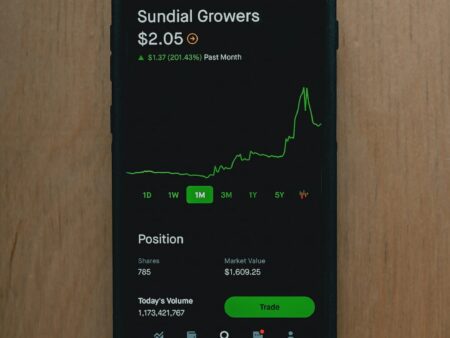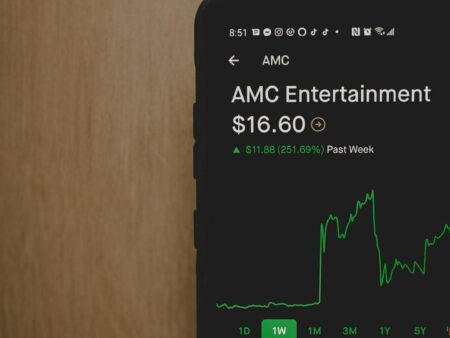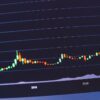Navigating the dynamic realm of Forex trading can seem like traversing a financial labyrinth, especially for those stepping into this domain for the first time. Forex, or foreign exchange trading, operates as a global marketplace where currencies are traded against one another, acting as the backbone of international trade and investment. It’s a realm marked by its accessibility, liquidity, and the potential for profit, drawing a diverse array of participants from seasoned traders to financial novices.
The essence of Forex trading is enmeshed in the perpetual fluctuations of currency values, driven by a myriad of economic, political, and social factors spanning across borders. While the prospect of delving into Forex trading can be enticing due to its lucrative potential, the journey demands a meticulous understanding of market mechanics, informed decision-making, and strategic agility.
This guide is meticulously crafted to act as your compass in the Forex odyssey, illuminating the path from the foundational steps to the intricate nuances of currency trading. It seeks to demystify the complexities and equip you with the knowledge, skills, and insights necessary to navigate the Forex seas with confidence and acumen.
We will commence by exploring the significance of aligning with a reputable broker, a critical ally in your trading journey. Progressing, we will delve into the essentials of placing your first trade, unfolding the procedural and strategic layers involved. Further, the guide will enhance your trading arsenal with fundamental Forex skills, empowering you to analyze and act with precision. Lastly, a focus on further studying will open doors to advanced knowledge realms, enriching your trading perspective and competency.
Finding a Good Broker: The Pillar of Successful Forex Trading
Embarking on the Forex trading journey mandates the selection of a reliable and competent broker, a decision that lays the foundational stone for your trading career. A broker acts as the intermediary between you and the vast currency market, enabling access, providing valuable insights, and facilitating transactions. Here’s a meticulous guide to selecting a broker that aligns with your trading aspirations, needs, and values.
Regulatory Compliance:
Prioritize brokers that are regulated by reputable financial authorities, such as the Financial Conduct Authority (FCA) or the Commodity Futures Trading Commission (CFTC). Regulatory compliance ensures a framework of integrity, transparency, and security, safeguarding your investments and ensuring fair trading practices. Scrutinize the broker’s certifications and memberships, ensuring they adhere to international regulatory standards.
Security Measures:
In the digital age, security is paramount. Opt for brokers employing cutting-edge security protocols and encryption technologies to protect your sensitive information and financial transactions. Investigate the broker’s history and reputation regarding security, focusing on any instances of data breaches or security lapses.
Transaction Costs:
Every trade incurs transaction costs, and it’s crucial to understand the cost structure of your potential broker. Assess the spread and commission structure, balancing the quest for competitive rates with the reliability and service quality of the broker. Be wary of seemingly low costs that may be compensating for deficiencies in other areas, such as security or customer service.
Trading Platform & Technology:
The trading platform is your gateway to the Forex market, and its usability, stability, and features significantly impact your trading experience. Evaluate the intuitiveness, reliability, and technological advancement of the broker’s trading platform. Seek platforms offering robust charting tools, analytical resources, and real-time market data, enhancing your market analysis and decision-making capabilities.
Customer Service:
Effective and responsive customer service can be the beacon of light in your trading journey, especially during turbulent times. Assess the availability, responsiveness, and competence of the broker’s customer support team. Prioritize brokers offering multiple communication channels, timely responses, and a customer-centric approach to resolving issues and queries.
Account Types and Leverage:
Brokers typically offer a variety of account types, each with its unique features, leverage, and margin requirements. Scrutinize the available options, aligning your choice with your risk tolerance, trading style, and financial goals. Understand the leverage offered, remembering that while higher leverage can amplify profits, it also escalates the risk of significant losses.
Execution Speed and Slippage:
In the fast-paced world of Forex, execution speed can be the difference between profit and loss. Assess the broker’s order execution speed and the occurrence of slippage, ensuring your trades are executed promptly and at the desired prices. Slippage, the difference between the expected price and the executed price, can impact your trading outcomes, especially in volatile markets.
Placing Your First Trade: Navigating the Initial Steps with Precision
Once you’ve secured a reliable broker and immersed yourself in fundamental forex skills, stepping into the actual trading arena is the next pivotal phase. Placing your first trade can be a mixture of excitement, anticipation, and anxiety. Here’s a comprehensive guide to navigating this initial step with precision and confidence.
Start with a Plan:
Before plunging into the market, devise a coherent trading plan. Identify your risk tolerance, set profit targets, and determine stop-loss levels. A well-structured plan acts as your roadmap, guiding your trading decisions and helping manage emotions during market fluctuations.
Market Analysis:
Equip yourself with a thorough analysis of the market. Employ technical, fundamental, and sentiment analysis to gauge market conditions, currency values, and potential trade opportunities. Comprehensive market analysis is the compass that directs your trading decisions, helping you navigate the market currents with informed insights.
Selecting a Currency Pair:
Decide on the currency pair you wish to trade. Each pair represents the value of one currency against another. The first listed (Base currency) is being bought, while the second (Quote currency) is being sold. Choose pairs you are knowledgeable about, and consider factors such as volatility, liquidity, and economic indicators related to the respective currencies.
Determine Trade Size:
Deciding on the size of your trade is crucial. Your position size should align with your risk management strategy, ensuring that potential losses do not derail your trading journey. Use leverage wisely; while it can amplify profits, it also escalates the risk exposure.
Set Take Profit and Stop Loss:
Implementing take profit and stop-loss orders is essential for effective risk management. Take profit orders automatically close your position once it reaches a predetermined profit level, while stop-loss orders limit losses by closing the trade at a predetermined level. These orders act as safeguards, protecting your investment from unexpected market movements.
Placing the Order:
With the preparatory steps completed, it’s time to place your order. Orders can be market orders, executed immediately at current market prices, or pending orders, executed once the market reaches a specified price. Ensure the accuracy of all trade parameters before confirming the order.
Monitor Trade Progress:
Once the trade is live, constant monitoring is vital. Stay updated on market developments and economic news that could impact currency values. Utilize real-time charts and analytical tools to assess trade performance and make informed adjustments if necessary.
Manage Emotions:
Trading, especially for beginners, can be an emotional roller coaster. Maintain emotional equilibrium by sticking to your trading plan and avoiding impulsive decisions based on fear or greed. Rationality and discipline are your allies in managing the ebbs and flows of trading emotions.
What should I do to improve as a Forex Trader?
After the closure of your trade, whether in profit or loss, conduct a thorough review. Analyze the trade’s execution, the effectiveness of your strategy, and any deviations from your trading plan. Extract lessons from each trade to refine your strategies and enhance your future trading decisions.
Embarking on a journey into the intricate realm of Forex trading demands continuous learning, profound understanding, and meticulous application of strategies and skills. Once a trader has assimilated the basics and placed their first trades, the importance of further studying becomes paramount, acting as the keystone for sustained success and refinement in trading strategies. Diving into diverse learning resources like books, webinars, and online courses can provide varied insights and deepen the understanding of market mechanics, enhancing analytical and decision-making skills.
Participation in specialized forums and trading communities opens doors to rich discussions, experience sharing, and invaluable insights from seasoned traders, offering a multifaceted view of market trends, trading strategies, and practical experiences. Advancing skills in both technical and fundamental analysis is crucial; a profound understanding of technical indicators, chart patterns, economic indicators, and market sentiments can empower traders to dissect market movements meticulously and align their strategies with macroeconomic trends. Staying abreast of global financial news and developments, market research reports, and economic developments is pivotal in adapting strategies to the dynamic market environment, allowing for informed and timely decision-making.
Exploring the intricacies of trading psychology enables traders to fortify mental resilience, manage emotions and stress effectively, and maintain trading discipline. This psychological resilience coupled with advanced risk management techniques can act as a protective shield for capital, mitigating adverse market movements and ensuring the sustainability of trading activities. Regular backtesting of trading strategies against historical data, employing simulation tools, and periodic, detailed reviews of trading performance can help in refining strategies and improving market execution skills.
Lastly, delving into the world of algorithmic trading






